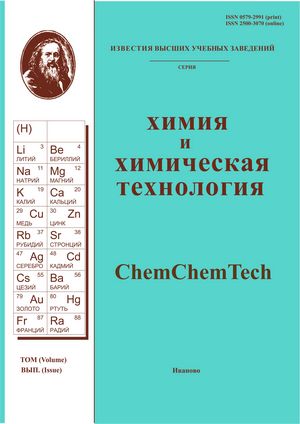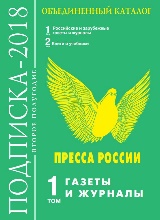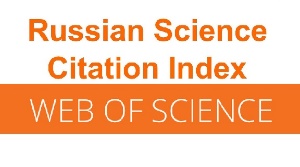ХИТОЗАН И ЕГО МОДИФИЦИРОВАННЫЕ ФОРМЫ: ПОЛУЧЕНИЕ, СВОЙСТВА, ПРИМЕНЕНИЕ. ОБЗОР
Аннотация
В настоящее время серьезный интерес исследователей вызывают макромолекулярные материалы, производимые из возобновляемого сырья. Одними из наиболее распространенных источников природного возобновляемого сырья являются полисахариды, к классу которых относятся целлюлоза и хитозан, получаемый из хитина. Использование хитозана, природного полимера, в последнее время возросло из-за его противомикробных и противогрибковых свойств, нулевой токсичности, биосовместимости и способности образовывать биопленки и гидрогели. Области применения хитозана включают биомедицину, фармацевтику, технологии очистки воды, а также производство биоматериалов, средств по уходу за волосами и кожей. Однако применение хитозана ограничено из-за сложности модификации его структуры и плохой растворимости в воде. Функционализацию структуры хитозана с помощью химических модификаций проводят по направлениям: - N-замещение, O-замещение (с защитой реакционных центров хитозана или без нее) и сшивание с другими соединениями. Данные химические модификации позволяют улучшить физико-химические свойства хитозана. В настоящем обзоре рассмотрены структура, способы получения, физико-химические свойства, пути химической модификации и области применения хитозана. Дан анализ индивидуальных свойств хитозана, позволяющих создавать инновационные материалы с особыми характеристиками, раскрывающими адаптивность и биоценность хитозана. Отдельное внимание уделено способам модификации хитозана различными методами и функциональными компонентами, которые позволяют варьировать его качественные, количественные и биологические характеристики. Обсуждены подходы к получению и свойства гуанидинсодержащих композиционных материалов на основе хитозана, а также возможные области их применения.
Для цитирования:
Агоева Э.А., Хаширова С.Ю. Хитозан и его модифицированные формы: получение, свойства, применение. Обзор. Изв. вузов. Химия и хим. технология. 2025. Т. 68. Вып. 3. С. 6-19. DOI: 10.6060/ivkkt.20256803.7083.
Литература
Rajasree R., Rahate K.P. An overview on various modifications of chitosan and it’s applications. IJPSR. 2013. V. 4 N 11. P. 4175-4193. DOI: 10.13040/IJPSR.0975-8232.4(11).4175-93.
Sadovoy V.V., Shchedrina T.V. Investigation of the quantum chemical characteristics of a fragment of a molecule of a biologically active additive chitosan. Mezhdunarod. Nauch.-Issled. Zhurn. 2016. N 4 (46). Pt. 2. P. 166-169 (in Russian). DOI: 10.18454/IRJ.2016.46.190.
Varlamov V.P., Ilyina A.V., Shagdarova B.C., Lunkov A.P., Mysyakina I.S. Chitin/Chitosan and its derivatives. Usp. Experim. Biology. Khim. 2020. V. 60. P. 317-368 (in Russian). DOI: 10.1134/S0006297920140084.
Reshad R.A.I., Jishan T.A., Chowdhury N.N. Chitosan and its Broad Applications: A Brief Review. J. Clin. Investig. 2021. V. 12. N 4. P. em00779. DOI: 10.29333/jcei/11268.
Namboodiri M.M., Pakshirajan K. Valorization of waste biomass for chitin and chitosan production. Waste Biorefinery. 2020. P. 241-266. DOI: 10.1016/b978-0-12-818228-4.00010-1.
Aranaz A.R., Alcantara M.C. Chitosan: An Overview of Its Properties and Applications. Polymers. 2021. V. 13. N 19. P. 3256. DOI: 10.3390/polym13193256.
Chadha U., Bhardwaj P., Selvaraj S.K. Advances in chitosan biopolymer composite materials: from bioengineering, wastewater treatment to agricultural applications. Mater. Res. Express. 2022. V. 9. N 5. P. 052002. DOI: 10.1088/2053-1591/ac5a9d.
Jimenez-Gomez C.P., Cecilia J.A. Chitosan: A Natural Biopolymer with a Wide and Varied Range of Applications. Molecules. 2020. V. 25. N 17. P. 3981. DOI: 10.3390/molecules25173981.
Minh N.C., Van Hoa N., Trung T.S. Preparation, proper-ties, and application of low-molecularweight chitosan. Hand-book of Chitin and Chitosan. 2020. P. 453-471. DOI: 10.1016/ b978-0-12-817970-3.00015-8.
Riyan Al Islam Reshad, Tawfiq Alam Jishan, Nafisa Nusrat. Chowdhury. Chitosan and its Broad Applications: A Brief Review. J. Clin. Experim. Investig. 2021. V. 12. N 4. P. 00779. DOI: 10.29333/jcei/11268.
Zargar V., Asghari M., Dashti A.A. Review on Chitin and Chitosan Polymers: Structure, Chemistry, Solubility, Derivatives, and Applications. Chem. Bio. Eng. Rev. 2015. V. 2. N 3. P. 204-226. DOI: 10.1002/cben.201400025.
Dolgopyatova N.V., Novikov V.Yu., Kuchina Yu.A., Konovalova I.N. Influence of deacetylation conditions on the physico-chemical properties of chitosan from the shell of crustaceans. ChemChemTech [Izv. Vyssh. Uchebn. Zaved. Khim. Khim. Tekhnol.]. 2022. V. 65. N 5. P. 77-86 (in Russian). DOI: 10.6060/ivkkt.20226505.6563.
Huq T., Khan A., Brown D., Dhayagude N., He Z. Sources, production and commercial applications of fungal chitosan: A review. J. Biores. Bioprod. 2022. V. 7. N 2. P. 85-98. DOI: 10.1016/j.jobab.2022.01.002.
Abo Elsoud M.M., El Kady E.M. Current trends in fungal biosynthesis of chitin and chitosan. Bull. Nat. Res. Centre. 2019. V. 43. N 1. DOI:10.1186/s42269-019-0105-y.
Koc B., Akyuz L., Cakmak Y.S. Production and characterization of chitosan-fungal extract films. Food Biosci. 2020. V. 35. P. 100545. DOI: 10.1016/j.fbio.2020.100545.
Ramos Berger L.R., Montenegro Stamford T.C., de Oliveira K.A.R. Chitosan produced from Mucorales fungi using agro industrial by-products and its efficacy to inhibit Colletotrichum species. Internat. Int. J. Biolog. Macromol. 2018. V. 108. P. 635-641. DOI: 10.1016/j.ijbiomac.2017.11.178.
Vaingankar P.N., Juvekar A.R. Fermentative Production of Mycelial Chitosan from Zygomycetes: Media Optimization and Physico-Chemical Characterization. Adv. Biosci. Biotechnol. 2014. V. 5. N 12. P. 940-956. DOI: 10.4236/abb.2014.512108.
Abdel-Gawad K.M., Hifney A.F., Fawzy M.A., Gomaa M. Technology optimization of chitosan production from Aspergillus niger biomass and its functional activities. Food Hydrocoll. 2017. V. 63. P. 593-601. DOI: 10.1016/j.foodhyd.2016.10.001.
John Kasongo K., Tubadi D.J., Bampole L.D., Kaniki T.A., M. Kanda N.J., Lukumu M.E. Extraction and charac-terization of chitin and chitosan from Termitomyces titanicus. Appl. Sci. 2020. V. 2. N 3. P. 406. DOI: 10.1007/s42452-020-2186-5.
Araújo D., Ferreira I.C., Torres C.A.V., Neves L., Freitas F. Chitinous polymers: extraction from fungal sources, characterization and processing for additional applications. J. Chem. Technol. Biotechnol. 2020. V. 95. N 5. P. 1277-1289. DOI: 10.1002/jctb.6325.
Sector Digafe Alemu, Efrata Getachew, Ajoy Kanti Mondal. Study on the Physicochemical Properties of Chitosan and their Applications in the Biomedical. Internat. J. Polym. Sci. 2023. 13 p. DOI: 10.1155/2023/5025341.
Popova E.V., Domnina N.S. The biological activity of chitosan with different molecular weights. Vestn. Zashchity Rastenij. 2017. V. 3. N 93. P. 28-33 (in Russian).
Karpova N.V., Shagdarova B.C. The effect of the main characteristics of low molecular weight chitosan on the growth of the phyto-pathogenic fungus Botrytis cinerea. Priklad. Biokhim. Mikrobiol 2019. N 55. P. 386-395 (in Russian). DOI: 10.1134/S0555109919040068.
Eddya M., Tbib B., Hami K. A comparison of chitosan properties after extraction from shrimp shells by diluted and concentrated acids. Heliyon. 2020. V. 6. N 2. P. e03486. DOI: 10.1016/j.heliyon.2020.e03486.
Nilay Kahya. Water Soluble Chitosan Derivatives and their Biological Activities: A Review. Polym. Sci. 2019. V. 5. N 1. P. 3. DOI: 10.36648/2471-9935.5.1.44.
Islam S., Bhuiyan M.A.R., Islam M.N. Chitin and Chitosan: Structure, Properties and Applications in Biomedical Engineering. J. Polym. Environ. 2016. V. 25. N 3. P. 854-866. DOI: 10.1007/s10924-016-0865-5.
Bhardwaj S., Bhardwaj N.K., Negi Y.S. Effect of the degree of deacetylation of chitosan on its effectiveness as a chemical for surface application of paper packaging. Cellulose. 2020. V. 27. N 9. P. 5337-5352. DOI: 10.1007/s10570-020-03134-5.
Hosseinnejad M., Jafari S.M. Evaluation of different factors affecting antimicrobial properties of chitosan. Int. J. Biolog. Macromolec. 2016. V. 85. P. 467-475. DOI: 10.1016/j.ijbiomac.2016.01.02.
Utkarsh Chadha, Preetam Bhardwaj, Senthil Kumaran Selvaraj. Advances in chitosan biopolymer composite materials: from bioengineering, wastewater treatment to agricultural applications. Mater. Res. Express. 2022. V. 9. P. 052002. DOI: 10.1088/2053-1591/ac5a9.
Baghaei M., Tekie F.S.M., Khoshayand M.R. Optimization of chitosan-based polyelectrolyte nanoparticles for gene delivery, using design of experiment: in vitro and in vivo study. Mater. Sci. Eng. C. J. Preproof. 2021. V. 118. P. 111036 DOI: 10.1016/j.msec.2020.111036.
Cai J., Dang, Q., Liu C., Fan, B., Yan J., Xu, Y., Li J. Preparation and characterization of N-benzoyl-O-acetyl-chitosan. Int. J. Biol. Macromol. 2015. V. 77. P. 52-58. DOI: 10.1016/j.ijbiomac.2015.03.007.
Ma G., Yang D., Zhou Y., Xiao M., Kennedy J.F., Nie J. Preparation and characterization of water-soluble N-alkylated chitosan. Carbohydr. Polym. 2008. V. 74. P. 121-126. DOI: 10.1016/j.carbpol.2008.01.028.
Mohammadi E., Daraei, H., Ghanbari R., Dehestani Athar S., Zandsalimi Y., Ziaee A., Maleki A., Yetilmezsoy K. Synthesis of carboxylated chitosan modified with ferromagnetic nanoparticles for adsorptive removal of fluoride, nitrate, and phosphate anions from aqueous solutions. J. Mol. Liq. 2019. V. 273. P. 116-124. DOI: 10.1016/j.molliq.2018.10.019.
Benediktsdóttir B.E., Baldursson Ó., Másson M. Challenges in evaluation of chitosan and trimethylated chitosan (TMC) as mucosal permeation enhancers: From synthesis to in vitro application. J. Control. Release. 2014. V. 173. P. 18-31. DOI: 10.1016/j.jconrel.2013.10.022.
Ramasamy P., Subhapradha N., Thinesh T., Selvin J., Selvan K.M., Shanmugam V., Shanmugam A. Characterization of bioactive chitosan and sulfated chitosan from Doryteuthis singhalensis. Int. J. Biol. Macromol. 2017. V. 99. P. 682-691. DOI: 10.1016/j.ijbiomac.2017.03.041.
Cao J., You J., Zhang L., Zhou J. Homogeneous synthesis and characterization of chitosan ethers prepared in aqueous alkali/urea solutions. Carbohydr. Polym. 2018. V. 185. P. 138-144. DOI: 10.1016/j.carbpol.2018.01.010.
Jia Z., Shen D., Xu W. Synthesis and antibacterial activities of quaternary ammonium salt of chitosan. Carbohydr. Res. 2001. V. 333. P. 1-6. DOI: 10.1016/s0008-6215(01)00112-4.
Liang Dong, Yanan Li, Hailin Cong, Bing Yu, Youqing Shen. A review of chitosan in gene therapy: Developments and challenges. Carbohydr. Polym. 2024. V. 324. P. 121562. DOI: 10.1016/j.carbpol.2023.121562.
Rakhmetova A.A., Bo-goslovskaya O.A., Olkhovskaya I.P., Zhigach A.N., Ilyina A.V., Varlamov V.P., Glushchenko N.N. Wound healing properties of soft dosage forms with copper nanoparticles and low molecular weight chitosan derivatives. Vopr. Biology., Med. Farm. Khim. 2016. V. 19. N 7. P. 12-18 (in Russian).
Hu S., Wang Y., Wen X., Wang L., Jiang Z., Zheng C. Effects of low-molecularweight chitosan on the growth performance, intestinal morphology, barrier function, cytokine expression and antioxidant system of weaned piglets. BMC Vet. Res. 2014. V. 14. N 1. P. 215. DOI: 10.1186/s12917-018-1543-8.
Singh R., Shitiz K., Singh A. Chitin and chitosan: biopolymers for wound management. Int. Wound J. 2017. V. 14. N 6. P. 1276-1289. DOI: 10.1111/iwj.12797.
Matica A., Aachmann T., Sletta H. Chitosan as a Wound Dressing Starting Material: Antimicrobial Properties and Mode of Action. Int. J. Molec. Sci. 2019. V. 20. N 23. P. 5889. DOI: 10.3390/ijms20235889.
Yashica Rawal, Pragnesh Patani. Chitosan Nanoparticle and Its Application In NonParenteral Drug Delivery Meet Patel. J. Pharm. Negat. Res. 2022. V. 13. Sp. N 3. DOI: 10.47750/pnr.2022.13.S03.292.
Zhou Y., Guo L., Dai G., Li B., Bai Y., Wang W., Chen S., Zhang J. An Overview of Polymeric Nanoplatforms to Deliver Veterinary Antimicrobials. Nanomaterials. 2024. V. 14. P. 341. DOI: 10.3390/nano14040341.
Detsi A., Kavetsou E., Kostopoulou I., Pitterou I., Rozaria A., Pontillo N., Tzani A., Christodoulou P., Siliachli A., Zoumpoulakis P. Nanosystems for the Encapsulation of Natural Products: The Case of Chitosan Biopolymer as a Matrix. Pharmaceutics. 2020. V. 12. P. 669. DOI: 10.3390/pharmaceutics12070669.
Le V.T., Bach L.G., Pham T.T. Synthesis and antifungal activity of chitosansilver nanocomposite synergize fungicide against Phytophthora capsici. J. Macromol.. Sci. 2019. Pt. A. V. 56. N 6. P. 522-528. DOI: 10.1080/10601325.2019.1586439.
Durand G.A., Raoult D., Dubourg G. Antibiotic discovery: history, methods and perspectives. Int. J. Antimicrob. Agents. 2019. V. 53. N 4. P. 371-382. DOI: 10.1016/j.ijantimicag.2018.11.010.
Liu D., Yang F., Xiong F., Gu N. The Smart Drug Delivery System and Its Clinical Potential. Theranostics. 2016. V. 6. N 9. P. 1306-1323. DOI: 10.7150/thno.14858.
Risbud M.V., Hardikar A.A., Bhat S.V., Bhonde R.R. pH-sensitive freeze-dried chitosan-polyvinyl pyrrolidone hydrogels as controlled release system for antibiotic delivery. J. Control. Release. 2000. V. 68. N 1. P. 23-30. DOI: 10.1016/s0168-3659(00)00208-x.
Nawaz A., Ullah S., Alnuwaiser M.A. Formulation and Evaluation of Chitosan-Gelatin Thermosensitive Hydrogels Containing 5FU-Alginate Nanoparticles for Skin Delivery. Gels. 2022. V. 8. N 9. P. 537. DOI: 10.3390/gels8090537.
Sultankulov B., Berillo D., Sultankulova K., Tokay T., Saparov A. Progress in the Development of Chitosan-Based Biomaterials for Tissue Engineering and Regenerative Medicine. Biomolecules. 2019. V. 9. P. 470. DOI: 10.3390/biom9090470.
Yousefi A., Sarrafzadeh-Rezaei F., Asri-Rezaei S., Farshid A.-A., Behfar M. Fabrication of novel tubular scaf-fold for tendon repair from chitosan in combination with zinc oxide nanoparticles. Vet. Res. Forum: Int. Quarterly J. 2018. V. 9. N 2. P. 105-111. DOI: 10.30466/VRF.2018.29979.
Liu X., You L., Tarafder S. Curcumin-releasing chitosan/aloe membrane for skin regeneration. Chem. Eng. J. 2019. V. 359. P. 1111-1119. DOI: 10.1016/j.cej.2018.11.073.
Itai S., Suzuki K., Kurashina Y. Cell-encapsulated chitosan-collagen hydrogel hybrid nerve guidance conduit for peripheral nerve regeneration. Biomed. Microdevices. 2020. V. 22. N 4. P. 81. DOI: 10.1007/s10544-020-00536-x.
Bombaldi de Souza R.F., Bombaldi de Souza F., Thorpe A., Mantovani D., Popat K.C., Moraes Â.M. Biopolymerbased films and membranes as wound dressings. Int. J. Biolog. Macromolec. 2020. V. 143. P. 619-632. DOI: 10.1016/b978-0-12-818134-8.00007-9.
Zhang Y., Chen M., Tian J. In situ bone regeneration ena-bled by a biodegradable hybrid double-network hydrogel. Biomater. Sci. 2019. V. 7. N 8. P. 3266-3276. DOI: 10.1039/c9bm00561g.
Dhivya S., Padma V.V., Santhini E. Wound dressings - a review. BioMedicine. 2015. V. 5. N 4. P. 22. DOI: 10.7603/s40681-015-0022-9.
Niuris Acosta, Concepción Civera, Begoña Elorza, Javier Mingo, Carolina Castro, María de los Llanos Gandía. Cosmetics and Cosmeceutical Applications of Chitin, Chitosan and Their Derivatives. Polymers. 2018. V. 10. P. 213. DOI: 10.3390/polym10020213.
Nicolle L., Journot C.M.A., Gerber-Lemaire S. Chitosan Functionalization: Covalent and Non-Covalent Interactions and Their Characterization. Polymers. 2021. V. 13. P. 4118. DOI: 10.3390/polym13234118.
Miziev I.A., Hashirova S.Yu. Investigation of the distribution of guanidine polymethacrylate to create a new generation of nanocontainers providing targeted drug delivery to target cells. Med.-Farm. Zhurn. -"Pul's". 2023. V. 25. N 1. P. 83-88 (in Russian). DOI: 10.26787/nydha-2686-6838-2023-25-1-83-88.
Isupova Z.Yu., Hashirova S.Yu. New metal-containing complexes based on guanidine-containing dialdehyde cellu-lose. Khim. Volokna. 2017. N 6. P. 92-95 (in Russian).
Khashirova S.Yu., Sarbasheva A.I. The structure of guanidine-containing (co) polymers and their biocidal and toxic properties. Izv. vuzov. Sev.-Kavkaz. Reg. Estestv. Nauki. 2012. N 2. P. 71-75 (in Russian).
Salamaa A., Hasanin M., Hesemanna P. Synthesis and antimicrobial properties of new chitosan derivatives containing guanidinium groups. Carbohydr. Polym. 2020. V. 241. P. 116363. DOI: 10.1016/j.carbpol.2020.116363.
Naidenko E.V., Makarov S.V., Pokrovskaya E.A. Modification of chitosan with thiourea dioxide. ChemChemTech [Izv. Vyssh. Uchebn. Zaved. Khim. Khim. Tekhnol.]. 2021. V. 64. N 1. P. 73-78 (in Russian). DOI: 10.6060/ivkkt.20216401.6282.
Ping Li, Yangyang G., Zijia S. Synthesis, Characterization, and Bactericidal Evaluation of Chitosan/Guanidine Functionalized Graphene Oxide Composites. Molecules. 2017. V. 22. P. 12. DOI: 10.3390/molecules22010012.
Priyanka Sahariah, Már Másson. Antimicrobial Chitosan and Chitosan Derivatives: A Review of the Structure-Activity Relationship. Biomacromol. 2017. V. 18. N 11. P. 1525-7797. DOI: 10.1021/acs.biomac.7b01058.
Weyell P., Beekmann U., Kupper Ch., Dederichs M., Thamm J., Fischer D., Kralisch D. Synthesis of Guanidi-nylated Chitosan with the aid of Multiple Protecting ´ Groups and Investigation of Antibacterial Activity. Carbohydr. Polym. 2015. V. 127. P. 407-417. DOI: 10.1016/j.carbpol.2015.03.061.
Ying H., Yumin D., Jianhong Y., John F., Kennedy, Xiaohui W., Liansheng W. Synthesis, characterization and antibacterial activity of guanidinylated chitosan. Carbohydr. Polym. 2007. V. 67. P. 66-72. DOI: 10.1016/j.carbpol.2006.04.015.
Salama A., Hesemann P. Synthesis of N-Guanidinium-Chitosan/Silica Hybrid Composites: Efficient Adsorbents for Anionic Pollutants. J. Polym. Environ. 2018. V. 26. P. 1986–1997. DOI: 10.1007/s10924-017-1093-3.
Shengling S., Qiaozhi A., Xu Li, Liying Q., Beihai H., Huining X. Synergistic effects of chitosan–guanidine complexes on enhancing antimicrobial activity and wetstrength of paper. Biores. Technol. 2010. V. 101. P. 5693-5700. DOI: 10.1016/j.biortech.2010.02.046.
Kitae Ryu, Kyunghwan Kim, Tae-il Kim. Synthesis and Characterization of Guanidinylated Polyethylenimine-Conjugated Chitosan for Gene Delivery Systems. Macro-molec. Res. 2014. V. 22. N 3. P. 264-271. DOI: 10.1007/s13233-014-2048-3.
Xiaotong Y., Lingying L., Yushou W., Xiangyu L., Shaozeng L., Zihao Z., Shaofang H., Xiaoteng W., Yang Ch., Hailiang B., Jiake Ch., Sen H., Hongyu W. Preparation and evaluation of chitosan-polyvinyl alcohol/ polyhexa-methylene guanidine hydrochloride antibacterial dressing to accelerate wound healing for infectious skin repair. Ann. Transl. Med. 2021. V. 9. N 6. P. 482. DOI: 10.21037/atm-21-509.
Salama A. Dicarboxylic cellulose decorated with silver nano-particles as sustainable antibacterial nanocomposite material. Environ. Nanotechnol. Monit. Manag. 2017. V. 8. P. 228-232. DOI: 10.1016/j.enmm.2017.08.003.
Zhao-Sheng C., Yue-Ming S., Chun-Sheng Y., Xue-Mei Z. Preparation, characterization, and antibacterial activities of parabiguanidinyl benzoyl chitosan hydrochloride. J. Appl. Polym. Sci. 2012. V. 125. N 2. P. 1146-1151. DOI: 10.1002/app.33910.
Dobysh V.A., Koktysh N.V., Belyasova N.A., Korney V.V., Tarasevich V.A. Investigation of the structure and properties of the triple polymer-metal complex chitosan - Cu(II) - polyhexcamethylene guanidine. Izv. vuzov. Priklad. Khim. Biotekhnol. 2017. V. 7. N 1. P. 31-38 (in Russian). DOI: 10.21285/2227-2925-2017-7-1-31-38.
Ability Hironori Izawa, Mizuki Kinai, Shinsuke Ifuku, Minoru Morimoto, Hiroyuki Saimoto. Guanidinylation of Chitooligosaccharides Involving Internal Cyclization of the Guanidino Group on the Reducing End and Effect of Guanidinylation on Protein Binding. Biomolecules. 2019. V. 9. P. 259. DOI: 10.3390/biom9070259.
Salama A., Hesemann P. Synthesis and characterization of N-guanidinium chitosan/silica ionic hybrids as templates for calcium phosphate mineralization. Int. J. Biolog. Macromol. 2020. V. 147. P. 276-283. DOI: 10.1016/j.ijbiomac.2020.01.046.
Ying-Zong Rena, Xue-Jie Qi, Yuan-Lu Cui. Preparation of a Thermosensitive Guanidine-Chitosan/Poloxamer in situ Gel for Intranasal Delivery System. 5th Internat. Conf. on Informat. Eng. for Mechanics and Materials. 2015. P. 686-689. DOI: 10.2991/icimm-15.2015.129.
Sahariah P., Másson M. Antimicrobial chitosan and chitosan derivatives: A review of the structure-activity relationship. Bi-omacromolec. 2017. V. 18. N 11. P. 3846-3868. DOI: 10.1021/acs.biomac.7b01058.
Sahariah P., Benediktssdóttir B. E., Hjálmarsdóttir M.Á., Sigurjonsson O.E., Sørensen K.K., Thygesen M. B., Más-son M. Impact of chain length on antibacterial activity and hemocompatibility of quaternary N-Alkyl and N,N-Dialkyl chitosan derivatives. Biomacromolec. 2015. V. 6. N 5. P. 1449-1460. DOI: 10.1021/acs. biomac.5b00163.
Guo Z., Xing R., Liu S., Zhong Z., Li P. Synthesis and hydroxyl radicals scavenging activity of quaternized carbox-ymethyl chitosan. Carbohydr. Polym. 2008. V. 73. P. 173-177. DOI: 10.1016/j.carbpol.2007.10.021.
Yang S., Guo Z., Miao F., Xue Q., Qin S. The hydroxyl radical scavenging activity of chitosan, hyaluronan, starch and their O-carboxymethylated derivatives. Carbohydr. Polym. 2010. V. 82. P. 1043-1045. DOI: 10.1016/j.carbpol.2010.06.014.
Rahaiee S., Hashemi M., Shojaosadati S.A., Moini S., Razavi S.H. Nanoparticles based on crocin loaded chitosan-alginate biopolymers: Antioxidant activities, bioavailability and anticancer properties. Int. J. Biol. Macromol. 2017. V. 99. P. 401-408. DOI: 10.1016/j.ijbiomac.2017.02.095.
Wan A., Xu Q., Sun Y., Li H. Antioxidant activity of high molecular weight chitosan and N, O-quaternized chitosans. J. Agric. Food Chem. 2013. V. 61. P. 6921-6928. DOI: 10.1021/jf402242e.
Anraku M., Fujii T., Furutani N., Kadowaki D., Maruyama T. Antioxidant effects of a dietary supplement: Reduction of indices of oxidative stress in normal subjects by water-soluble chitosan. Food Chem. Toxicol. 2009. V. 47. P. 104-109. DOI: 10.1016/j.fct.2008.10.015.
Liu M., Min L., Zhu C., Rao Z., Liu L. Preparation, characterization and antioxidant activity of silk peptides grafted car-boxymethyl chitosan. Int. J. Biol. Macromol. 2017. V. 104. P. 732-738. DOI: 10.1016/j.ijbiomac.2017.06.071.
Chatterjee N.S., Panda S.K., Navitha M., Asha K.K., Anandan R. Vanillic acid and coumaric acid grafted chitosan derivatives: improved grafting ratio and potential application in functional food. J. Food Sci. Technol. 2015. V. 52. P. 7153-7162. DOI: 10.1007/s13197-015-1874-4.
Liu J., Lu J.F., Kan J., Tang Y.Q., Jin C.H. Preparation, characterization and antioxidant activity of phenolic acids grafted carboxymethyl chitosan. Int. J. Biol. Macromol. 2013. V. 62. P. 85-93. DOI: 10.1016/j.ijbiomac.2013.08.040.
Liu J., Wen X.Y., Lu J.F., Kan J., Jin C.H. Free radical mediated grafting of chitosan with caffeic and ferulic acids: Structures and antioxidant activity. Int. J. Biol. Macromol. 2014. V. 65. P. 97-106. DOI: 10.1016/j.ijbiomac.2014.01.021.
Hu Q., Wang T., Zhou M., Xue J., Luo Y. In vitro antioxidant-activity evaluation of gallicacid-grafted chitosan conju-gate synthesized by free-radicalinduced grafting method. J. Agric. Food Chem. 2016. V. 64. P. 5893-5900. DOI: 10.1021/acs.jafc.6b02255.
Khan I., Ullah S., Oh D.H. Chitosan grafted monomethyl fumaric acid as a potential food preservative. Carbohydr. Polym. 2016. V. 152. P. 87-96. DOI: 10.1016/j.carbpol.2016.06.073.
Zhu X., Zhou X., Yi J., Tong J., Wu H. Preparation and biological activity of quaternized carboxymethyl chitosan conjugated with collagen peptide. Int. J. Biol. Macromol. 2014. V. 70. P. 300-305. DOI: 10.1016/j.ijbiomac.2014.06.045.
Upadhyaya L., Singh J., Agarwal V., Pandey A.C., Ver-ma S.P. Efficient water soluble nanostructured ZnO grafted O-carboxymethyl chitosan/curcumin-nanocomposite for cancer therapy. Proc. Biochem. 2015. V. 50. P. 678-688. DOI: 10.1016/j.procbio.2014.12.029.
Wang G., Chen Y., Wang P., Wang Y., Hong H. Preferential tumor accumulation and desirable interstitial penetration of poly (lactic-co-glycolic acid) nanoparticles with dual coating of chitosan oligosaccharide and polyethylene glycol-poly (d,l-lactic acid). Acta Biomater. 2016. V. 29. P. 248-260. DOI: 10.1016/j.actbio.2015.10.017.
Maeda Y., Kimura Y. Antitumor effects of various low-molecularweight chitosans are due to increased natural killer activity of intestinal intraepithelial lymphocytes in sarcoma 180-bearing mice. J. Nutr. 2004. V. 134. P. 945-950. DOI: 10.1093/jn/134.4.945.
Park J.K., Chung M.J., Choi H.N., Park Y.I. Effects of the molecular weight and the degree of deacetylation of chitosan oligosaccharides on antitumor activity. Int. J. Mol. Sci. 2011. V. 12. P. 266-277. DOI: 10.3390/ijms12010266.
El-Far M., Elshal M., Refaat M., El-Sherbiny I.M. Antitumor activity and antioxidant role of a novel water-soluble carboxymethyl chitosan-based copolymer. Drug Dev. Ind. Pharm. 2011. V. 37. P. 1481-1490. DOI: 10.3109/03639045.2011.587430.
Wang D., Sun Y., Wu Y., Ma L., Duan J. Synthesis, characterization and anticancer activity of tanshinone I grafted low molecular chitosan. Glycoconj J. 2017. V. 34. P. 3-12. DOI: 10.1007/s10719-016-9712-0.
Kim M., Moon D., Kang C., Choi Y., Lee J. Water‐soluble chitosan sensitizes apoptosis in human leukemia cells via the downregulation of bcl‐2 and dephosphorylation of akt. J. Food Biochem. 2013. V. 37. P. 270-277. DOI: 10.1111/j.1745-4514.2011.00628.x.
Zhao L., Zhang S., An F., Ma S., Cheng Y. Water soluble chitosans shows anti-cancer effect in mouse H22 liver cancer by enhancing the immune. Int. J. Clin. Exp. Med. 2016. V. 9. P. 164-171.
Qin C., Du Y., Xiao L., Li Z., Gao X. Enzymic preparation of watersoluble chitosan and their antitumor activity. Int. J. Biol. Macromol. 2002. V. 31. P. 111-117. DOI: 10.1016/S0141-8130(02)00064-8.
Cai-Qin Q., Yu-Min D, Ling X, Xiao-Hai G., Ji-Lan Z. Effect of molecular weight and structure on antitumor activity of oxidized chitosan. Wuhan Univ. J. Nat. Sci. 2002. V. 7. P. 231-236. DOI: 10.1007/BF02830325.
Kong C.S., Kim J.A, Ahn B, Byun H.G., Kim S.K. Carboxymethylations of chitosan and chitin inhibit MMP expression and ROS scavenging in human fibrosarcoma cells. Process Biochem. 2010. V. 45. P. 179-186. DOI: 10.1016/j.procbio.2009.09.004.
Koumentakou I., Terzopoulou Z., Michopoulou A. Chitosan dressings containing inorganic additives and levofloxacin as potential wound care products with enhanced hemostatic properties. Int. J. Biolog. Macromolec. 2020. V. 162. P. 693-703. DOI: 10.1016/j.ijbiomac.2020.06.187.
Lebedeva O.A., Sedelkin V.M., Potekhin L.N. Production technology and characteristics of chitosan nanofiltration membranes. ChemChemTech [Izv. Vyssh. Uchebn. Zaved. Khim. Khim. Tekhnol.]. 2022. V. 65. N 1. P. 58-65 (in Russian). DOI: 10.6060/ivkkt.20226501.6340.
Zemskova L.A., Voit A.V., Shlyk D.H., Barinov N.N. Carbon fibers modified with transition metal oxides for As (V) removal from solutions. ChemChemTech [Izv. Vyssh. Uchebn. Zaved. Khim. Khim. Tekhnol.]. 2016. V. 59. N 9. P. 31-37 (in Russian).



















